KING ALFONSO XIII
In most cases, after the medieval period, it can be seen that even in the face of the most violent upheavals there is a deep-rooted desire to maintain some degree of continuity in the Armorial display of the State. There is also a desire to indicate the full extent of that state and to show this a sovereign may include quarterings for all those States which he claims to represent. Quarterings may also be introduced for reasons connected solely with his House. We have already observed the practice adopted by some sovereigns of placing the Arms of their house on a smaller shield ( an escutcheon ) upon the Arms of their State. A glance at the Royal Arms of Spain as borne by Alphonso XIII or the original version of the Royal Arms of Leopold I of Belgium will prove that that the reverse procedure could also be adopted. In reality the presence of an escutcheon or inescutcheon does not necessarily indicate an elected sovereign, although it may do so; it is merely a convenient way of allying the Arms of the monarch and of the State. The two most complicated royal Coats of Arms in Europe today, those of Denmark and Greece, are very closely related. Denmark shows a complex arrangement of Arms marshaled on a single shield together with the Cross of Dannebrog. Upon this is placed another shield bearing yet a third Coat of Arms. These indicate that the King of Denmark is a scion of the House of Oldenburg. The Royal Arms of Greece go one stage further; over the Greek National Arms is placed a shield of the complete arms of King Christian IX of Denmark whose son was raised to the Greek throne as George I.
 In the 19th century several new monarchies were founded. The Arms followed traditional patterns. We have spoken above of Denmark and Greece, but the case of The Netherlands id of particular interest because of the way in which the Arms of the reigning House were modified to form those of the State; the lion of Nassau was made to hold a sword and a bundle of arrows. Of course not all European States are kingdoms. They include the Grand Duchy of Luxembourg ( arms above ) and the Principalities of Liechtenstein and Monaco, all of which display typically dynastic Arms. The Co-Principality of the Valleys of Andorra has two versions of its Coat of Arms which recall its original joint suzerains, or feudal lords, the Catalan Bishop of Urgel and the French Count of Foix. The older states also include the Swiss Confederation and the Republic of San Marino. The former gained practical independence of the Holy Roman Empire in 1499 and formal independence in 1648, yet its Coat of Arms were only formally decreed in 1814.
In the 19th century several new monarchies were founded. The Arms followed traditional patterns. We have spoken above of Denmark and Greece, but the case of The Netherlands id of particular interest because of the way in which the Arms of the reigning House were modified to form those of the State; the lion of Nassau was made to hold a sword and a bundle of arrows. Of course not all European States are kingdoms. They include the Grand Duchy of Luxembourg ( arms above ) and the Principalities of Liechtenstein and Monaco, all of which display typically dynastic Arms. The Co-Principality of the Valleys of Andorra has two versions of its Coat of Arms which recall its original joint suzerains, or feudal lords, the Catalan Bishop of Urgel and the French Count of Foix. The older states also include the Swiss Confederation and the Republic of San Marino. The former gained practical independence of the Holy Roman Empire in 1499 and formal independence in 1648, yet its Coat of Arms were only formally decreed in 1814.
 In the 19th century several new monarchies were founded. The Arms followed traditional patterns. We have spoken above of Denmark and Greece, but the case of The Netherlands id of particular interest because of the way in which the Arms of the reigning House were modified to form those of the State; the lion of Nassau was made to hold a sword and a bundle of arrows. Of course not all European States are kingdoms. They include the Grand Duchy of Luxembourg ( arms above ) and the Principalities of Liechtenstein and Monaco, all of which display typically dynastic Arms. The Co-Principality of the Valleys of Andorra has two versions of its Coat of Arms which recall its original joint suzerains, or feudal lords, the Catalan Bishop of Urgel and the French Count of Foix. The older states also include the Swiss Confederation and the Republic of San Marino. The former gained practical independence of the Holy Roman Empire in 1499 and formal independence in 1648, yet its Coat of Arms were only formally decreed in 1814.
In the 19th century several new monarchies were founded. The Arms followed traditional patterns. We have spoken above of Denmark and Greece, but the case of The Netherlands id of particular interest because of the way in which the Arms of the reigning House were modified to form those of the State; the lion of Nassau was made to hold a sword and a bundle of arrows. Of course not all European States are kingdoms. They include the Grand Duchy of Luxembourg ( arms above ) and the Principalities of Liechtenstein and Monaco, all of which display typically dynastic Arms. The Co-Principality of the Valleys of Andorra has two versions of its Coat of Arms which recall its original joint suzerains, or feudal lords, the Catalan Bishop of Urgel and the French Count of Foix. The older states also include the Swiss Confederation and the Republic of San Marino. The former gained practical independence of the Holy Roman Empire in 1499 and formal independence in 1648, yet its Coat of Arms were only formally decreed in 1814.

